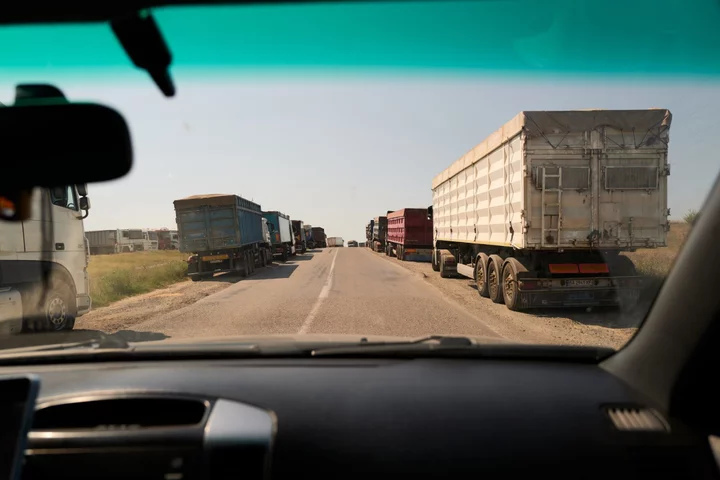As Ukraine’s farmers labor through their second wartime harvest, they’re expecting a big one. They just don’t know how much of it will ever make it to market.
Russian attacks on export routes through both the Black Sea and Danube River remain a constant threat for shipping out crops that help feed the world. That’s making it harder and more expensive to squeeze cargoes out through Europe, causing supplies to pile up in Ukraine.
On top of that, many farmers are having to export crops themselves after major trading companies pulled back from the country following Moscow’s invasion.
“Every Ukrainian farmer has now become an exporter and a logistician,” said Mykola Gapeyev, chief executive officer of port operator Ascet Shipping. “We obviously can’t quickly and efficiently transport the same volumes that we shipped via Odesa ports through railroads or the Danube. Miracles do not happen if infrastructure is not ready.”
As a key exporter of staples including corn, wheat and sunflower oil, Ukraine’s supplies are important for helping to keep a lid on global food inflation. While the overall harvest is still about a quarter smaller than before the war, it’s coming in better than expected and bigger than last year.
Good summer weather offset cutbacks on things like fertilizers and boosted grain and oilseed crops. The Ukrainian Grain Association estimates an overall harvest of about 80 million tons — up 8% from last year and and well above earlier forecasts.
The International Grains Council expects the country’s grain output to reach almost 59 million tons, compared with a forecast earlier this year that it could come in at 47 million tons.
But getting those crops out to the world is proving difficult, even with Kyiv this week sending a small grain shipment through the Black Sea for the first time in months as it tries to defy Moscow’s blockade of critical waterway. And it’s too early to know if that corridor will lead to big shipments.
For now, much of its exports are leaving via the Danube, as well as rail and truck routes into the European Union. The lengthy alternatives are a contentious issue that has seen some EU nations impose their own bans on imports from Ukraine as the bloc ended restrictions.
Those options are becoming more expensive. Freight rates at Danube ports are about €70 to €80 ($75-$86) a ton, roughly double the amount last year, according to Alex Lissitsa, a board member of the Ukrainian Agribusiness Club.
The war has not only hurt Ukraine’s exports, but also helped Moscow tighten its grip on the international wheat market. Another bumper harvest means Russia is set to export record amounts of the grain for a second straight year, helping to keep a lid on prices.
Ukraine Losses
The prospect of losses in Ukraine means small growers may start to exit the industry and sell assets, said Rafael Goroian, the owner of local trader Prometey Group.
The firm operates at the Danube’s Reni port and uses trucks as temporary storage after Russia attacked terminals. But drones have targeted trucks now too and Goroian expects strikes to continue. That’s on top of bottlenecks caused by re-routing Black Sea exports.
“The Danube ports work at their limits — they are physically unable to load more, even with large investments,” said Goroian, who recently opened a branch in Egypt to support his Ukrainian business. Using rail and road routes also isn’t ideal due to high transit costs through Europe, he said.
The fear is that there could be long-term impacts on Ukraine’s production. Whereas farmers’ efforts used to be focused on sowing, harvesting and selling to traders, now they have to manage additional logistics and higher costs.
Going forward, some may only plant what they think they can sell.
“Now everyone understands that a huge amount of crops creates problems,” said Nazar Malyniak, a partner at analytic company SmartFarming. “The producer doesn’t know where to sell it and how to deliver.”
--With assistance from Daryna Krasnolutska and Megan Durisin.









